Quentin Tarantino’s Inglourious Basterds: A Masterclass in Historical Subversion and Stylized Violence
Quentin Tarantino’s Inglourious Basterds (2009) boldly reimagines World War II, discarding the solemn realism typically associated with war films. Instead, Tarantino employs a potent blend of postmodern pastiche, dark humor, and stylized violence to reconstruct history through his unique lens. Often dubbed a “pulp war narrative,” the film interweaves a fictional plot to assassinate Hitler with the saga of Jewish avengers, blurring the lines between historical events and fantastical imagination. Tarantino’s audacious decision to have Hitler meet his end in a cinema inferno, using the burning celluloid as a metaphor for cinema’s power to rewrite reality, is both a rebellion against traditional war narratives and a tribute to the medium of film itself.
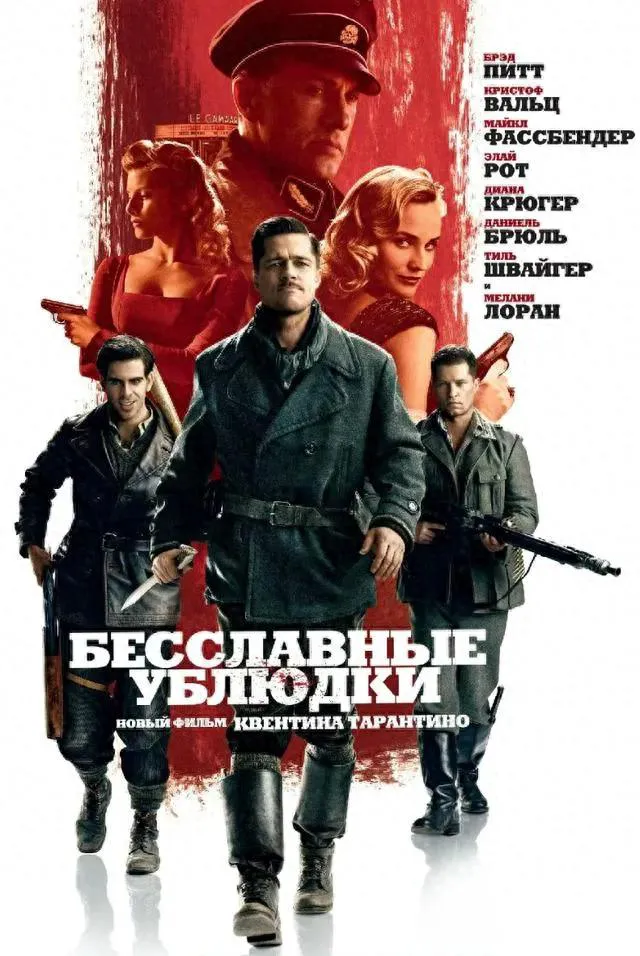
The film’s chaptered structure, reminiscent of a five-act play, echoes Tarantino’s signature narrative style. Similar to Pulp Fiction, the story unfolds through multiple interwoven storylines, propelled by sharp, dialogue-driven scenes. From the tense psychological game in the French farmhouse in Chapter One to the explosive shootout in the basement tavern in Chapter Four, and culminating in the fiery climax at the cinema in Chapter Five, each act showcases Tarantino’s trademark “talkative” style and bursts of violence, creating a narrative tension that keeps the audience captivated.
Character Dynamics: Exploring the Duality of Violence and the Human Condition
Hans Landa: The Epitome of Elegant Evil
Christoph Waltz’s portrayal of Colonel Hans Landa, the “Jew Hunter,” is the linchpin of the film. Fluent in multiple languages, Landa masks his cold-blooded nature with an air of refined politeness. The scene in the farmhouse, where he casually smokes his pipe while orchestrating the massacre of a Jewish family, exemplifies the chilling elegance of his violence. The complexity of his character lies in his opportunism; he is not driven by Nazi ideology but by self-preservation, ultimately betraying the Nazis for personal gain. The branding of a swastika on his forehead serves as Tarantino’s ultimate commentary on identity.
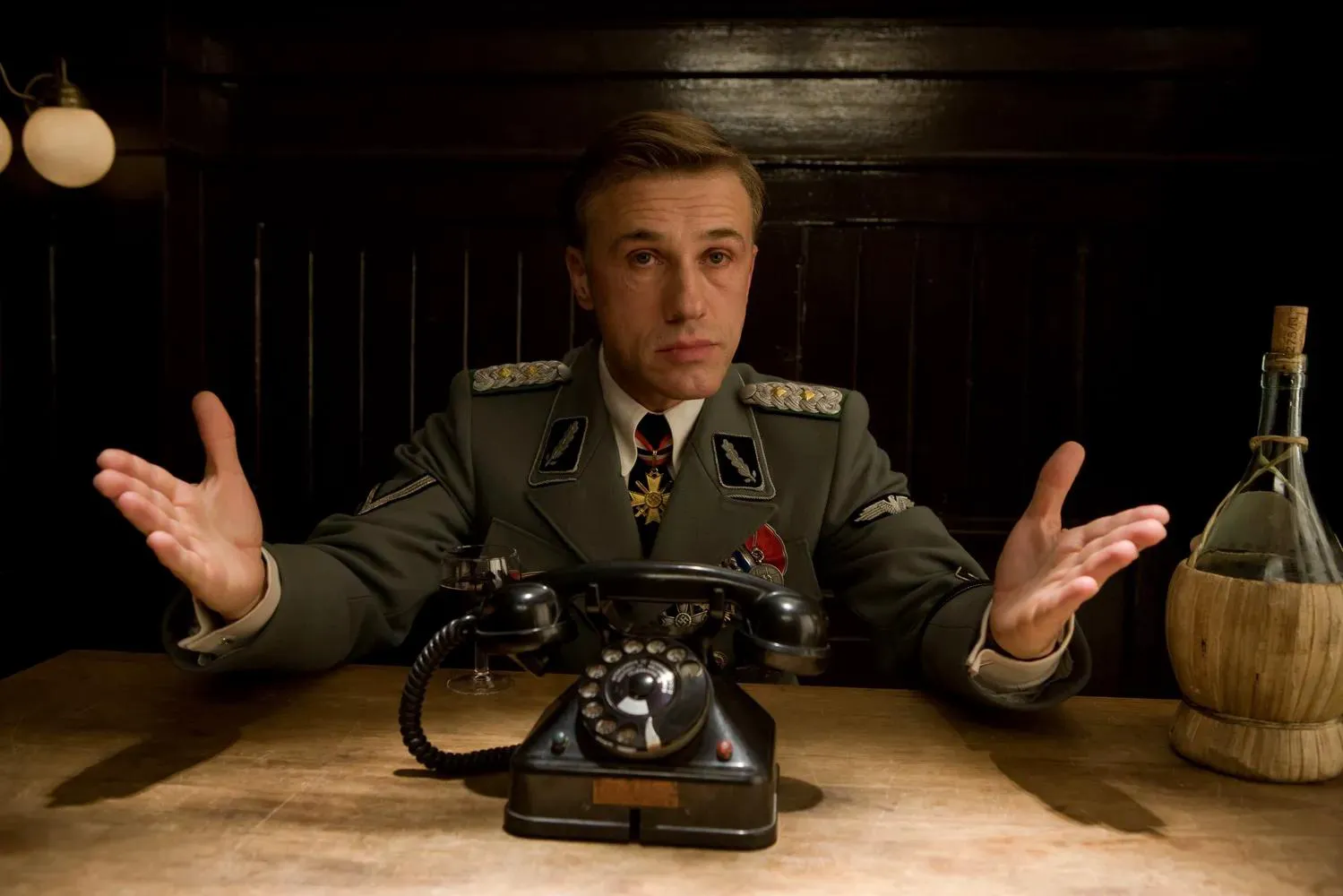
Shosanna Dreyfus: A Poetic Vengeance in Crimson
Mélanie Laurent’s Shosanna, a Jewish survivor who witnesses the brutal murder of her family, transforms into a vengeful force at the cinema. Adorned in a red dress and war paint, she embodies a goddess of retribution. The scene where she orchestrates the demise of the Nazi elite is elevated by slow-motion shots and David Bowie’s “Cat People,” turning violent death into a macabre ballet. Her revenge is not merely personal; it’s a reconstruction of historical narrative, with the burning film symbolizing the power of cinema as a weapon.
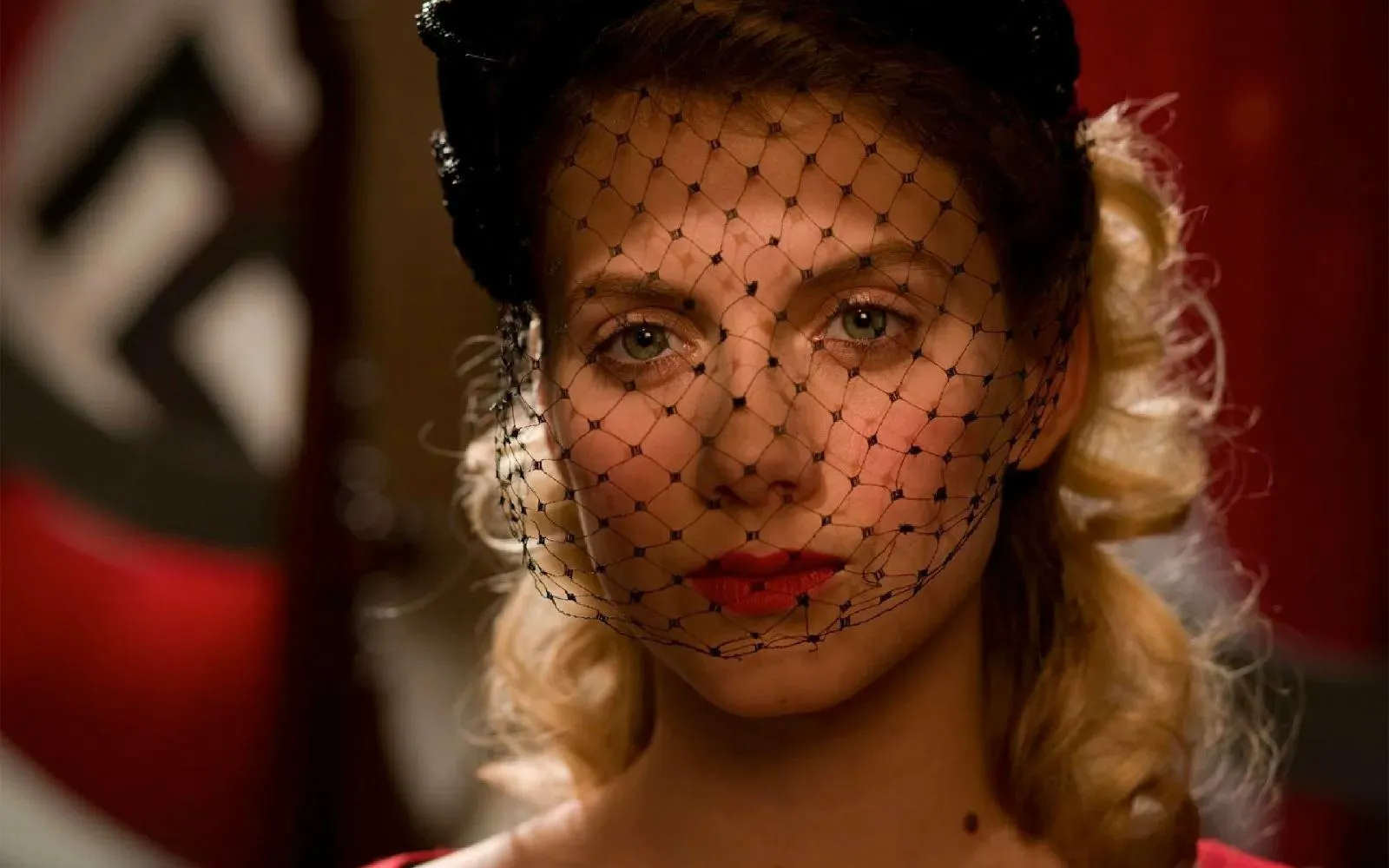
The Basterds: Navigating the Ethical Minefield of Violence
Led by Lieutenant Aldo Raine, played by Brad Pitt, the Basterds are a squad of Jewish soldiers who exact revenge on the German army through extreme measures like scalping and carving swastikas into foreheads. Their brutal tactics blur the line between justice and cruelty, prompting Tarantino to question whether violence in the name of justice is simply another form of human degradation. The film refrains from glorifying them as heroes, instead highlighting the barbarity of their methods, suggesting that the dehumanization of war is inevitable.

The Aesthetics of Violence: A Celebration of Form and Philosophical Reflection
Elevating Audiovisual Language
Tarantino’s mastery of violent aesthetics reaches new heights in Inglourious Basterds:
- Color Symbolism: Shosanna’s red dress and the crimson of the Nazi flags create a striking visual resonance, while the red and white contrast in the cinema shootout amplifies the poetry of death.
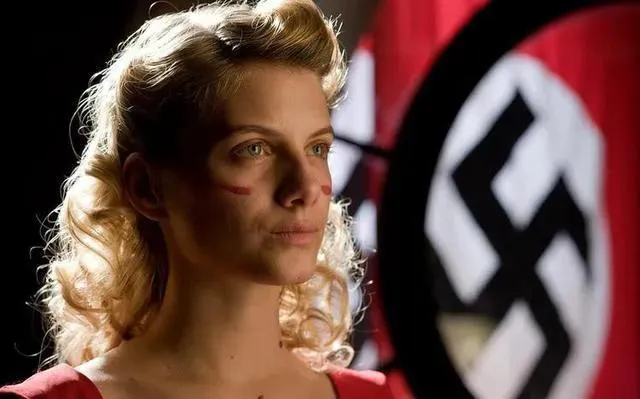
- Musical Collage: From Western film scores to rock anthems, music serves as an emotional amplifier for violent scenes. The tense silence before the basement shootout, followed by the sudden eruption of gunfire, creates a dramatic contrast.
- Verbal Violence: The psychological duel between Hans Landa and the farmer, and the multilingual standoff in the tavern, demonstrate how language itself can be a weapon, often more oppressive than physical force.
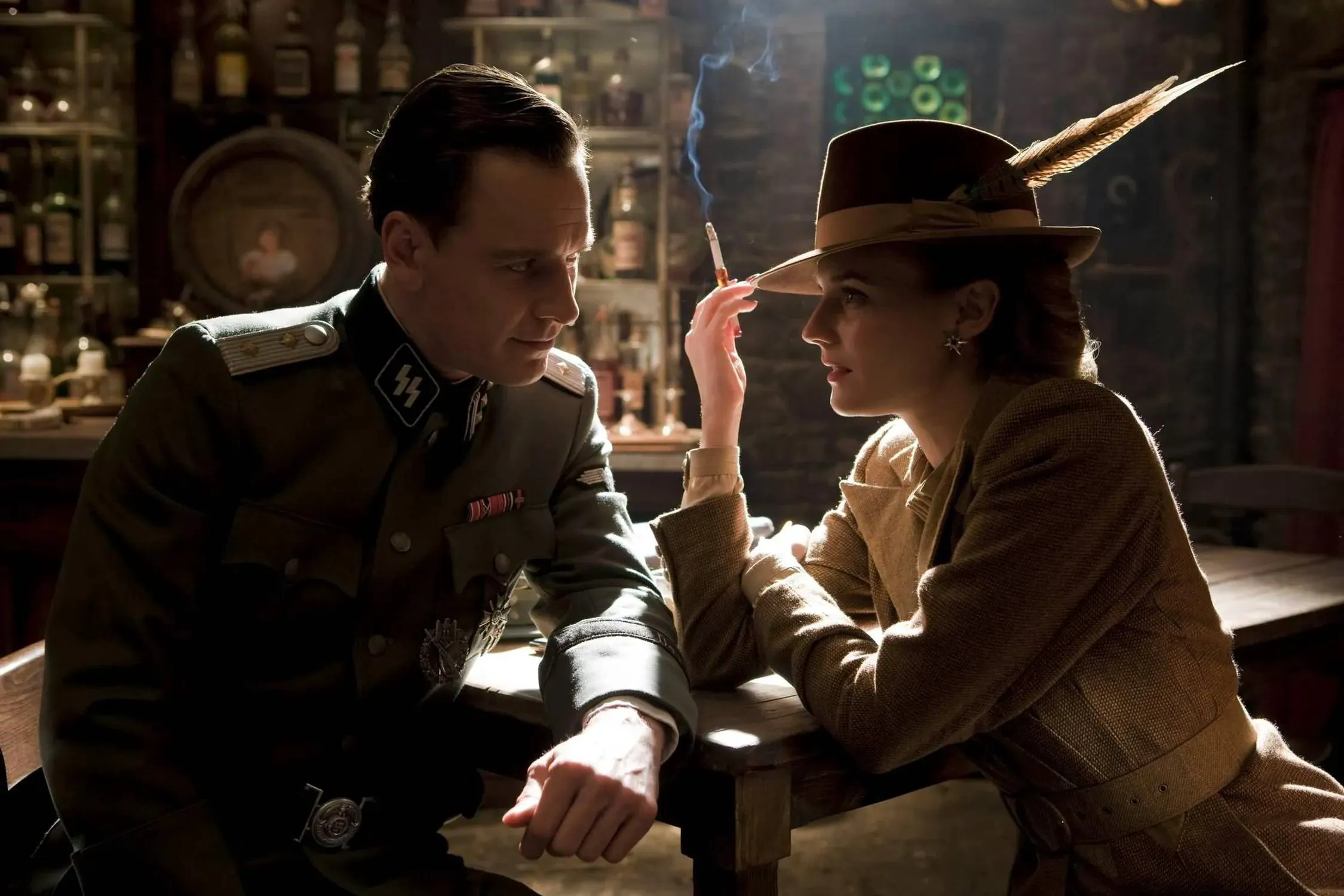
The Playfulness of Violence and the Dissolution of Ethics
Tarantino gamifies violence: the Basterds’ “100 scalps” competition and the absurd standoff under the table, where characters point at each other’s genitals, use dark humor to diffuse the gravity of violence. This approach doesn’t glorify violence but places it within a postmodern framework, forcing viewers to confront its essence: is it an inevitable consequence of war or an outlet for human desires?
Thematic Core: War, Art, and the Reconstruction of Identity
Art as Redemption and Destruction
In the film, the cinema is both a site of massacre (where Shosanna’s family hid) and a stage for revenge (where the celluloid ignites the Nazi elite). Tarantino portrays cinema itself as a subversive force, suggesting that art can both record history and reconstruct reality.
The Fluidity of Identity and Betrayal
Characters constantly assume false identities: Shosanna as a cinema owner, British spies as German officers, and Hans Landa’s ultimate betrayal of the Nazis. This fluidity of identity deconstructs the absolute good and evil of war, revealing the survival strategies of individuals in the face of power struggles.
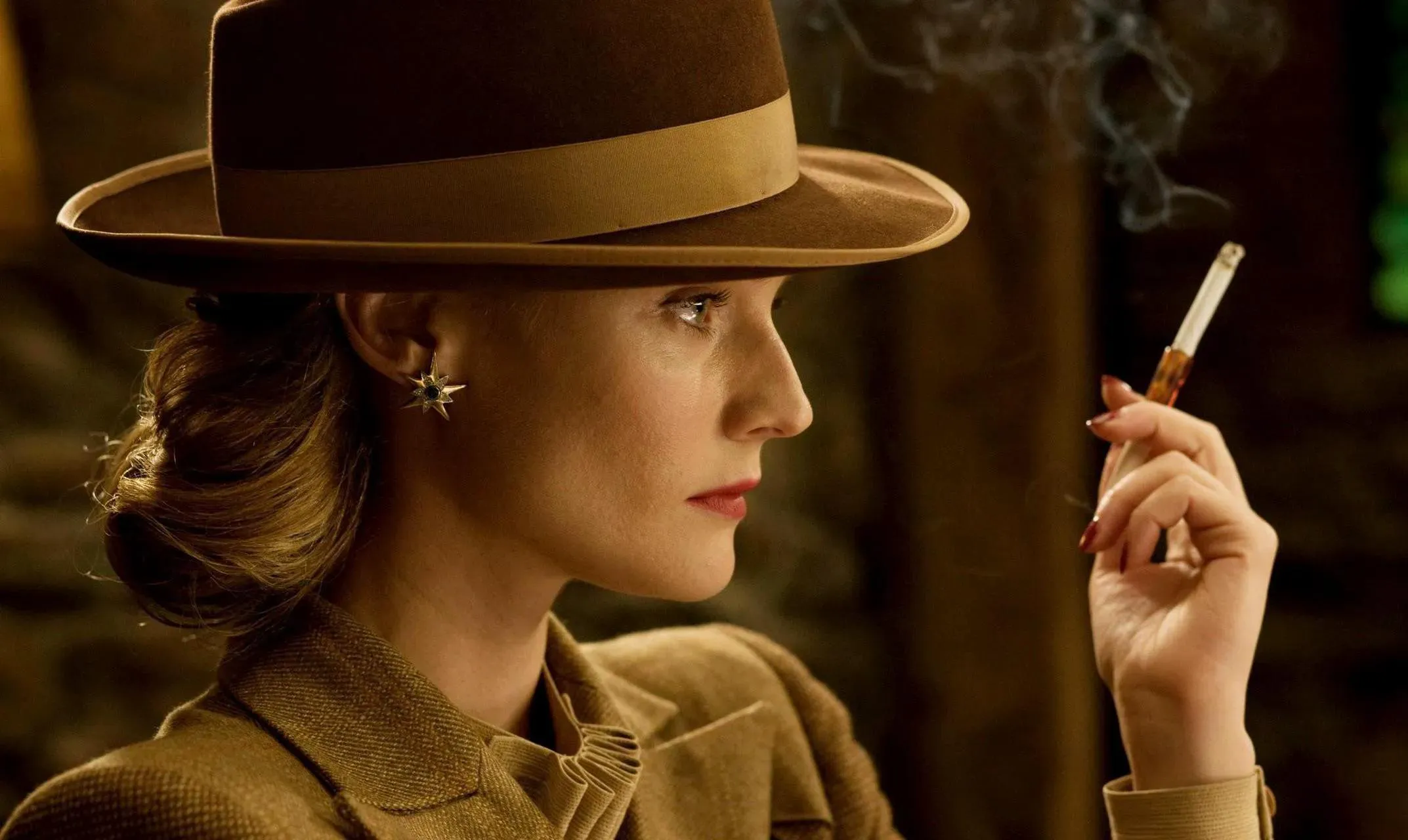
Controversy and Legacy: The Quintessential Tarantino
Inglourious Basterds has sparked polarized opinions due to its graphic violence and historical revisionism. Critics accuse it of trivializing the suffering of war, while supporters praise its innovation within the genre. Regardless, it remains a quintessential example of Tarantino’s auteur style—a fusion of B-movie sensibilities, Western narrative structures, and European art-house aesthetics, pioneering a new paradigm of the “postmodern war film.”
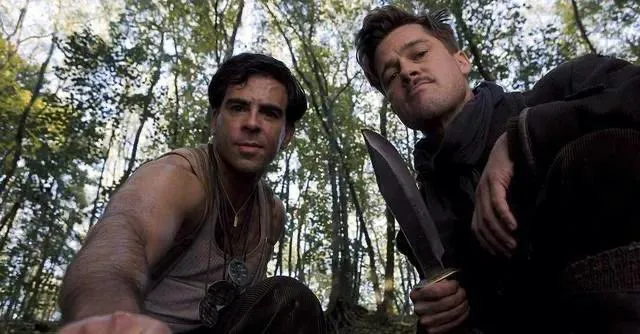
With Inglourious Basterds, Quentin Tarantino delivers a cathartic cinematic experiment, transforming war into a canvas for personal fantasy and crafting an absurd yet magnificent epic through violence. The film reminds us that while cinema may not rewrite historical truths, art possesses the enduring power to deconstruct and rebuild. Like Shosanna’s avenging flames, it not only incinerates Nazi ambitions but also ignites a perpetual inquiry into humanity, violence, and redemption.